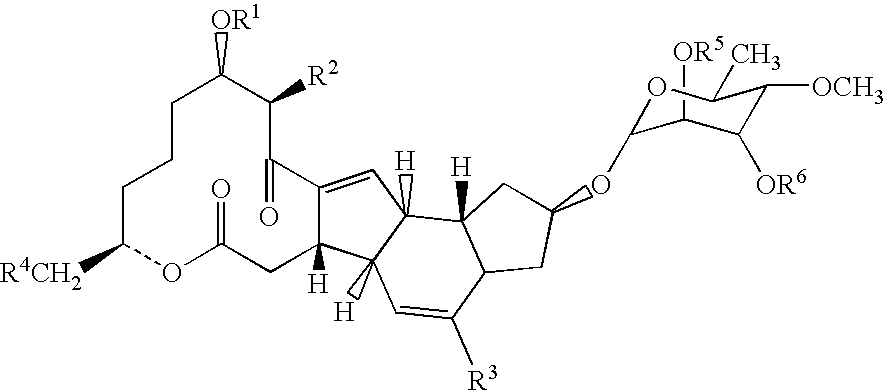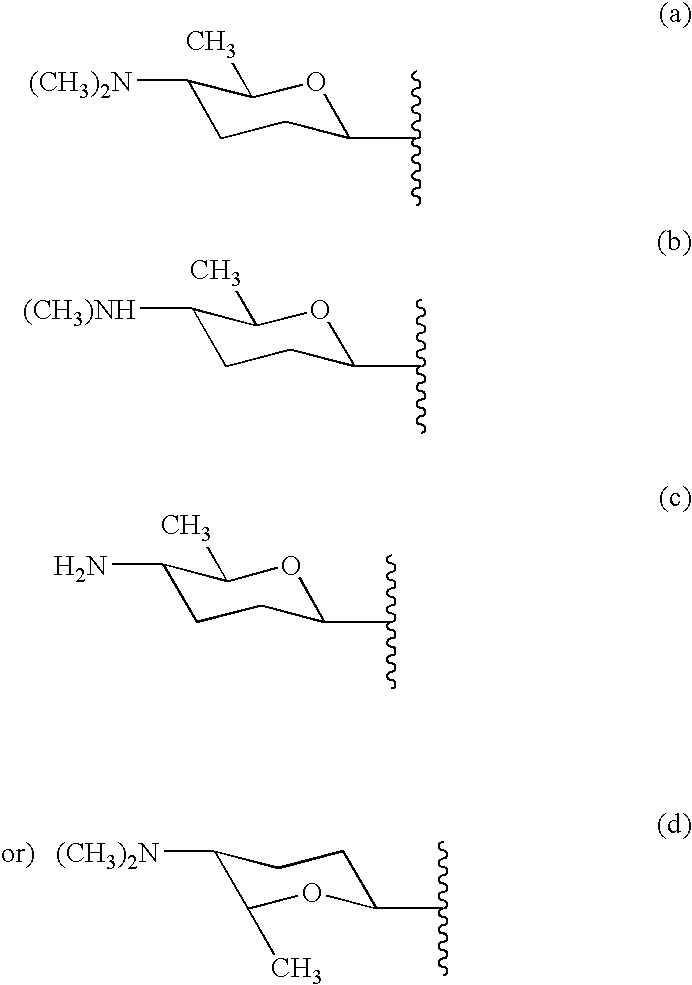Pesticidal formulations
- Summary
- Abstract
- Description
- Claims
- Application Information
AI Technical Summary
Benefits of technology
Problems solved by technology
Method used
Image
Examples
example 1
In-vitro Assays to Investigate Possible Synergism between Spinosad and Ivermectin on Lice
Materials and Methods
Using the methods of Rugg and Thompson (J Aust Ent Soc, 1993; 32:1-3) groups of 4×15 lice are allowed to feed on ground sheep epidermis containing a range of concentrations of spinosad or ivermectin for 48 hour. Mortality is assessed after 48 hours and LC90 values determined by probit analysis. Lice are exposed to the LC90 concentration of spinosad or ivermectin and ½, ¼ and ⅛ of the LC90. In addition lice are exposed to 1:1, 1:4, 4:1, 9:1 and 1:9 combinations of each chemical with each concentration of chemical being a fraction of the LC90.
The method of generalized linear models for overdispersed binomial data using the logistic link function is used for an analysis of the treatment groups. The analysis estimates dose-response lines (on the logarithmic dose scale) for each chemical or combination. The dose response lines are used to predict the efficacy of the combina...
example 2
In Vitro Assays to Investigate Synergism between Spinosad and Ivermectin in Fleas
I) Artificial Membrane System for Adult Fleas.
Materials and Methods
The artificial membrane system (artificial dog) devised by Wade and Georgi (J Med Entomol 1988; 25:186-190) allows adult fleas to feed on blood and is suitable to detect the effect of systemic insecticides. Groups of 25 fleas are allowed to feed on citrated blood containing a range of concentrations of spinosad or ivermectin for 24 hours. Mortality is assessed after 24 hours and LC90 values determined by probit analysis. Fleas are exposed to the LC90 concentration of spinosad or ivermectin and ½, ¼ and ⅛ of the LC90. In addition fleas are exposed to 1:1, 1:4, 4:1, 9:1 and 1:9 combinations of each chemical with each concentration of chemical being a fraction of the LC90.
Results
There is significant potentiation in most of the combinations tested. Potentiation is most pronounced using 4:1 and 9:1 ratios of spinosad: ivermectin.
I...
example 3
In Vitro Assays to Investigate Synergism between Spinosad and Ivermectin in Cattle Ticks
I) Larval Immersion Studies.
Materials and Methods
The larval immersion test described by Sabatini, Kemp and others (Vet Parasitol 2001; 95:53-62) is used except that larvae are desiccated for 12 hours first to induce them to imbibe the immersion liquid when immersed. Groups of 500 larvae are immersed in liquids containing a range of concentrations of spinosad or ivermectin in for 20 minutes then transfered to paper packets. Mortality is assessed after 24 hours and LC90 values determined by probit analysis. Tick larvae are exposed to the LC90 concentration of spinosad or ivermectin and ½, ¼ and ⅛ of the LC90. In addition larvae are exposed to 1:1, 1:4, 4:1, 9:1 and 1:9 combinations of each chemical with each concentration of chemical being a fraction of the LC90.
Results
There is significant potentiation in most of the combinations tested. Potentiation is most pronounced using 4:1 and 9:1 r...
PUM
| Property | Measurement | Unit |
|---|---|---|
| Mass | aaaaa | aaaaa |
| Fraction | aaaaa | aaaaa |
| Ratio | aaaaa | aaaaa |
Abstract
Description
Claims
Application Information
 Login to View More
Login to View More - R&D
- Intellectual Property
- Life Sciences
- Materials
- Tech Scout
- Unparalleled Data Quality
- Higher Quality Content
- 60% Fewer Hallucinations
Browse by: Latest US Patents, China's latest patents, Technical Efficacy Thesaurus, Application Domain, Technology Topic, Popular Technical Reports.
© 2025 PatSnap. All rights reserved.Legal|Privacy policy|Modern Slavery Act Transparency Statement|Sitemap|About US| Contact US: help@patsnap.com


